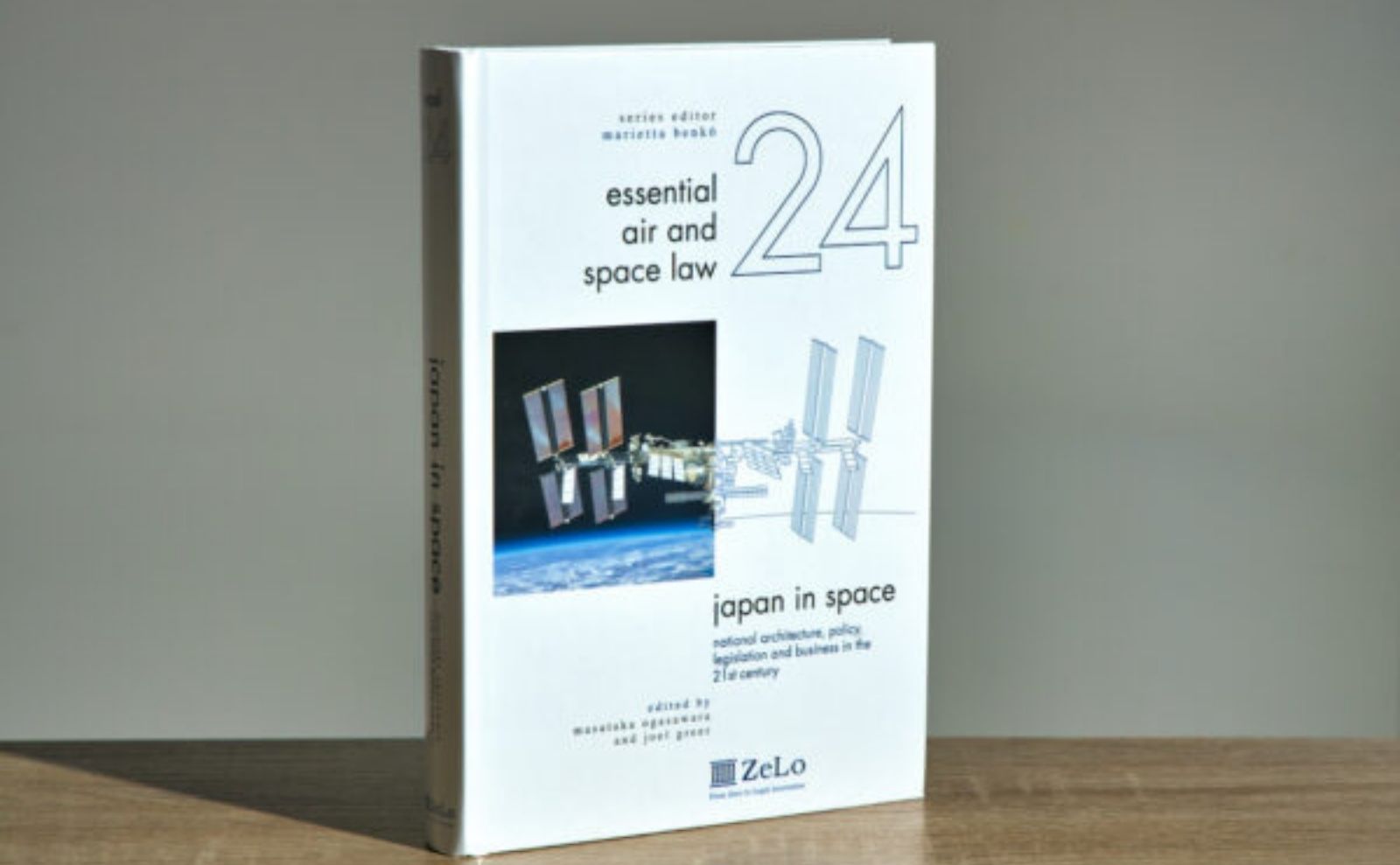【弁護士が解説】2026年1月施行 取適法(旧下請法)改正のポイントと実務対応

弁護士
竹下 晴哉

法律事務所ZeLoは、2021年5月に、英文書籍『Japan in Space - National Architecture, Policy, Legislation and Business in the 21st Century』(Eleven International Publishing)を出版いたしました。 本書は、上場企業からベンチャー企業まで、宇宙開発に関するビジネスを検討する⽅々へ向けて、⽇本の宇宙開発のこれまでとこれからを基本から解説する内容となっております。

今回は、出版社であるEleven International Publishingの許可を得て、同書の序章を無料公開いたします。序章から書籍の内容の一端を知っていただけたら幸いです。
ZeLo, a Foreign Law Joint Enterprise is pleased to announce that Eleven International Publishing has published “Japan in Space - National Architecture, Policy, Legislation and Business in the 21st Century” in May 2021. The book begins by tracing the history of Japan’s space organizations, policies, and laws.
In this article, the Preface of the book is reprinted with the kind permission of the publisher. We hope you can get a glimpse of the contents of the book from the Preface.
目次
This book offers a short survey of a large topic: Japan’s space program, including its space organizations, laws, and policies, as well as a look at some of the important and interesting players in Japan’s space industry today. It is meant for readers who have a general interest in Japan’s space development or who (whether in or outside Japan) may be considering participation in a growing and increasingly diverse array of Japanese space-related business opportunities.
Japan was an early pioneer in space technology and, in 1970, became the fourth spacefaring nation. [1] As of the writing of this book, the Japanese satellite Hayabusa2 has recently returned to Earth from a pioneering mission to collect surface and sub-surface samples from an asteroid. Yet Japan was relatively slow to embrace the commercial potential of space and, relatedly, was “a latecomer in the field of national space legislation,” with enactment of a foundational Basic Space Law only in 2008. [2] This book addresses the reasons for this circumstance while tracing the history of Japan’s space organizations, policies, and laws in Chapter 1.
The focus of this book, however, is on the present day. Chapter 2 delineates the current organizational mainstays of Japan’s space program. These leading organizations are the product of a long process of consolidation, and Japan now has a coordinated centralized administration to conceive, plan, and execute its space objectives. One of these goals, as discussed, is to encourage the private sector – major established corporations, mid-sized firms, and young start-ups alike – to consider and take advantage of the wide-ranging commercial possibilities of space development and use.
Supporting new business opportunities while managing the attendant risks, especially in an area such as space development that carries not insignificant hazards and also is the subject of international treaty obligations, entails the need for more specific national legislation. Chapters 3 and 4 address in some detail the two laws Japan enacted in 2016 to regulate its space activities: the Act on Launching of Spacecraft, etc. and Control of Spacecraft, and the Act on Ensuring Appropriate Handling of Satellite Remote Sensing Data.
In addition to these two space laws, non-Japanese participants in Japan-based space activities should be aware of more general Japanese foreign investment legislation, which is introduced in Chapter 5. This chapter also discusses the possibility that such participants may be subject to space-related laws of their home jurisdiction in addition to those of Japan.
Since 2008, pursuant to its Basic Space Law, the Japanese government has issued several versions of the country’s Basic Plan on Space Policy. This important document sets forth broad policy goals and specific programs of Japan’s space development. Chapter 6 examines the most recent version of the Basic Plan on Space Policy issued in mid-2020.
Chapter 7 describes a number of Japanese companies – some large, some small – which currently are involved in various space-related businesses. The firms featured in this chapter are just a sample of Japan’s private sector engaged in the commercialization of space, but they are illustrative of the sophistication and creativity being brought to bear as Japan and the world enter the 21st century’s third decade.
[1]: See S. Aoki, “Current Status and Recent Developments in Japan’s National Space Law and its Relevance to Pacific Rim Space Law and Activities” (“Current Status and Recent Developments in Japan’s National Space Law”), 35 Journal of Space Law, Issue 2, 2009, p. 363, at https://spacelaw.sfc.keio.ac.jp/sitedev/archive/current.pdf.編著を担当した小笠原匡隆、Joel Greerが、本書の見どころについて動画で語っております。ぜひご覧ください!
Masataka Ogasawara and Joel Greer, who were in charge of the editorial board, introduce the highlights of the book in this video. We hope you will take a look!

Japan in Space - National Architecture, Policy, Legislation and Business in the 21st Century
本書は、日本の宇宙開発について、宇宙の関係機関・法令・政策の歴史を含めて網羅的に解説しています。 日本での宇宙での活動に関する主な二つの法律(宇宙二法)として、「人工衛星等の打上げ及び人工衛星の管理に関する法律(宇宙活動法)」と「衛星リモートセンシング記録の適正な取扱いの確保に関する法律(衛星リモートセンシング法)」の2つがあります。本書では、この2つの法律について詳しく解説しています。
また、日本の宇宙開発の大きな政策目標と具体的な計画を定めた、令和2年6月30日付の「宇宙基本計画」についても丁寧に検証しています。 さらに、日本を拠点とする宇宙活動に、海外から参加する方のために、日本への外国投資に関する規制の概要についても紹介しています。
本書は、日本の宇宙法に関心をお持ちの方、日本の宇宙開発に興味をお持ちの方、あるいは、ますます多様化する日本の宇宙関連ビジネスへの参加を検討されている方を対象としています。
(写真:人見 拓磨)

